Cricket is a team or sport. Or may be not. There are instances galore of individuals rising to the occasion and saving the day for their teams single-handedly while their teammates ended up doing little. Even more are the examples of one man failing after a fight and the rest falling soon predictably like a pack of cards. Both of these underline the team’s dependence on an individual instead of the much-vaunted team effort.Let us take a look at five cricketers who emerged as one-man armies and carried their respective teams on their shoulders when the stakes had been high.
#1 Shakib Al Hasan
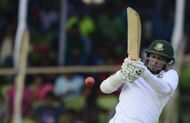
Portraying Shakib Al Hasan as simply the best cricketer Bangladesh has ever produced hardly does any justice to his talent and achievements. Much like Arjuna Ranatunga for the Lankans, Shakib has done for Bangladesh what more than half of his teammates could not even contemplate doing. He has been a beacon of hope amidst the gloom of lost matches, a messiah that his countrymen have always prayed for, the Tendulkar and Murali of the developing nation.
At 28, and with merely nine years of international experience, Shakib is already the second highest run scorer in the history of Bangladesh with as many as 6 hundreds and 30 half-centuries. He is the quickest to have completed the double of 4000 runs and 200 wickets in the history of the game. Further, he is only 6 away from becoming the leading wicket-taker for his country in ODIs. In Tests, he leads the chart with 147 wickets – 47 clear of second-placed Mohammad Rafique.
All these numbers pretty much give you an idea about the kind of player and leader Shakib has been for his team throughout the length of his career. The distinction of becoming the first cricketer to attain No. 1 ranking as an all rounder in all three formats of cricket explains the reason behind commentators’ lamentation of the southpaw’s unfortunate birth in the wrong country.
#2 Shivnarine Chanderpaul
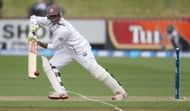
Averaging 51.37 and being only second to the Brian Lara in terms of most career Test runs scored by a West Indian (that too, only 45 behind) are intimidating achievements, all the more so considering the idiosyncratic stance and weird technique Shivnarine Chanderpaul is famous for. Yet, it is this man who held fort after Lara’s retirement and refused to surrender his wicket, scoring tediously for his team while the likes of Gayle and Sarwan prioritized flamboyance instead.
In ODIs, Chanderpaul averages more than all his teammates except Ramnaresh Sarwan. Although his hundred-scoring spree was founded in the 2001-02 Test series against India, it was not until Lara had retired in 2007 that the left-hander could establish himself as a one-man army. Among a horde of irresponsible talent and disinterested players, the Guyanese stood tall scoring consistently against the best teams in the world.
The former world No. 1 in Test cricket is known for his perseverance and eagerness to protect his wicket – a quality that has aided in many a Caribbean comeback in recent memory. The events of 2012 series against Australia would probably be apt to describe Chanderpaul’s role in the otherwise unpromising West Indies batting line-up. The mighty left-hander went on to accumulate 346 runs in 5 innings while the rest of the team returned paupers, the next highest aggregate being a distant 186.
#3 Kevin Pietersen
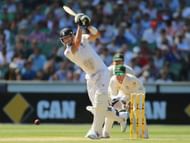
South Africa-born Kevin Pietersen is an eccentric character. He would not conform to the norms in the dressing room, and when he would go out into the middle, he would ensure an annoyingly reckless end to a magnificent innings every time. Despite his attitude problems, and an ego the size of the Pyramid of Giza that continues to keep him out of the national team even now, it was this man that England relied upon to avoid defeat in the late 2000s.
During a span of 4 years between 2005 and 2008, Pietersen single-handedly dominated the English batting line-up. For more than once it had been remarked that England was reduced to a one-man army, KP being the figure at the cynosure. He stacked up piles of runs in 2005, being the only one to put up a resistance against South Africa. He ended the year with 3 centuries at an average of 65.33.
In the 2007 World Cup in the Caribbean, he emerged as the highest scorer for England with 2 centuries and 3 fifties. In fact, these were the two highest series aggregates for an English batsman during that period. Similar to the 2005-06 India series, Pietersen stood tall in the 2008-09 tour to India ill-supported by teammates and failing to clinch the trophy in spite of scoring an unbeaten 111 at Cuttack.
#4 Misbah-ul-Haq
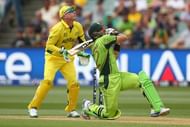
As just another example of late-bloomer in Pakistani cricket, no one expected Misbah-ul-Haq to be handed over the captaincy of the team so soon after his introduction to the international stage in 2007. Although he did have a brief stint in 2002, his figures were so dull that they were almost always forgotten.
Misbah first top-scored in a series for Pakistan in the 2011 ICC World Cup when he accumulated 248 runs in 8 matches and was a steady contributor throughout along with Umar Akmal. By then he had already established himself as a bulwark in the otherwise brittle and unpredictable Pakistani batting line-up. In the series against West Indies following the World Cup, he scored 184 runs at an average of 92.00, almost 40 higher than the next best Mohammed Hafeez.
The right-hander performed consistently against South Africa in the 2012-13 ODI series, winning the Man of the Match award in the 4th ODI. He was also the leading run-scorer for Pakistan in the 2015 World Cup averaging close to 75.10 in 7 innings. That he averages almost 45 ever since his comeback to international cricket in 2007 and has to his credit as many as 42 half-centuries speak volumes about the stability he has rendered to the otherwise volatile Pakistani team.
#5 Sachin Tendulkar
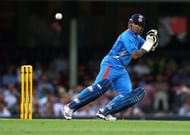
The general consensus in the cricketing world during the 1990s was that the Indian team, especially the batting order, was largely a one-man army. The opposition banked on the fact that if they got Sachin, the rest would fold easily. While it may appear ludicrous for one man to remain the heart of the team for a decade and no less, the claims, as statistics suggest, are by no means unfounded in their entirety.
In ODIs won between January 1990 and December 1999, Tendulkar averages 61.77 having scored more than double that of second-placed Sourav Ganguly. In matches lost, he remains only second to Mohammed Azharuddin, who had remained unbeaten 8 times in comparison to Sachin’s one.
However, India in the 90s were beasts at home and paupers abroad. Sachin’s average of 52.00 in away matches that India won emphasizes the extent to which his team was dependent on him. Even in Tests away from home, he sits atop the list of highest runs scorers – more than a thousand runs clear of next best Azaharuddin – with an average of 56.56 with 13 tons and 12 half-centuries.
Follow IPL Auction 2025 Live Updates, News & Biddings at Sportskeeda. Get the fastest updates on Mega-Auction and cricket news